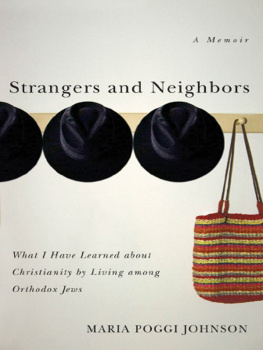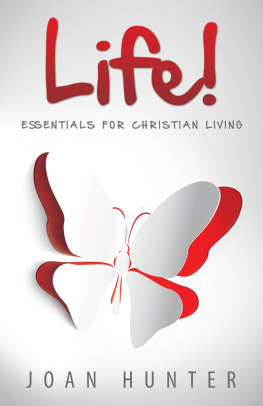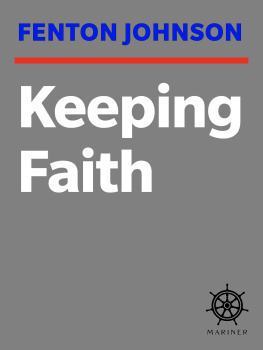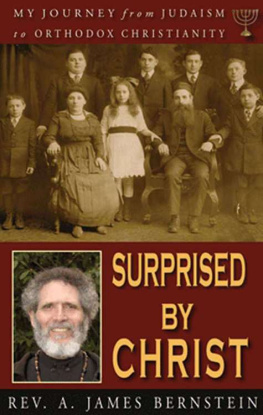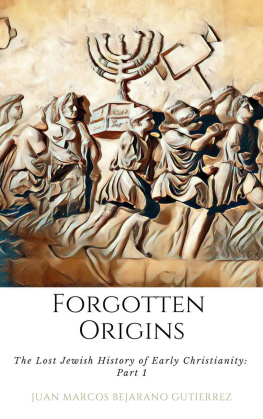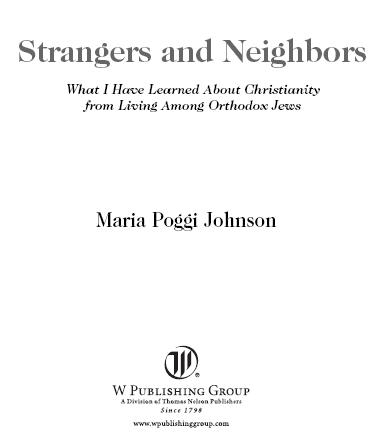
STRANGERS AND NEIGHBORS
Copyright 2006 Maria Poggi Johnson
All rights reserved. No portion of this book may be reproduced, stored in a retrieval system, or transmitted in any form or by any meanselectronic, mechanical, photocopy, recording, or any otherexcept for brief quotations in printed reviews, without the prior permission of the publisher.
Published by W Publishing Group, a division of Thomas Nelson, Inc., P.O. Box 141000, Nashville, Tennessee 37214.
W Publishing Group books may be purchased in bulk for educational, business, fund-raising, or sales promotional use. For information, please e-mail SpecialMarkets@ThomasNelson.com.
All Scripture quotations, unless otherwise indicated, are taken from the New Revised Standard Version Bible (NRSV), copyright 1989 by the Division of Christian Education of the National Council of the Churches of Christ in the U.S.A. Used by permission. All rights reserved.
Editorial Staff: Kate Etue, acquisitions editor, Thom Chittom, managing editor
Cover Design: David Drummond
Page Design:Walter Petrie
Library of Congress Cataloging-in-Publication Data
Johnson,Maria Poggi.
Strangers and neighbors / Maria Poggi Johnson.
p. cm.
ISBN-10: 0-8499-1151-6
ISBN-13: 978-0-8499-1151-4
1. Johnson, Maria Poggi. 2. Christian biography. 3. Christianity and other religionsJudaism. 4. JudaismRelationsChristianity. I. Title.
BR1725.J622A3 2006
261.26092dc22
2006005932
Printed in the United States of America
06 07 08 09 10 RRD 5 4 3 2 1
Contents
The subject of this book is not Judaism, nor Orthodox Judaism in contemporary America, nor even the particular brand of Orthodox Judaism practiced in my neighborhood. These are books I would like to read but am unqualified to write. The subject of this book is my own experience, and that of my family, living as Catholic Christians in proximity to a community of strictly observant Orthodox Jews and in friendship with a handful of families in that community. The only point of view I represent with any consistency is my own. Names of individuals have been changed. (Thanks for the list of names,Menucha!)
A minimum of background may be useful. We live in a small city in northeastern Pennsylvaniaa former mining communitywhere there is a community of some sixty or seventy families of Orthodox Jews, mostly clustered in the Hill Section where we live. The Jews in our neighborhood are from the stricter end of the Orthodox spectrum: what are popularly called ultra-Orthodox or black hatters. (For the most part, they do not belong to the various Hasidic groups, although there are a number of Lubavitcher families.)
There is a saying: Two Jews, three opinions. Judaism is a very diverse and wonderfully argumentative tradition. So when I say Jews do x or Jews believe y, I do so for the sake of brevity. The opinions I cite here are those of the person who happened to be nearest when I thought of the question. Maybe if I had turned to the person on my left instead of to the person on my right, I would have come away with quite a different picture. Although the kind of Judaism represented by my friends and neighbors is the fastest-growing form in the world today, the considerable majority of American Jews do not live at all like my neighbors. My neighbors, by and large, would say that their form of observance is the authentic one and that all Jews should live like them. Most Jews from the Reform and Conservative traditions, and even from the more liberal end of Orthodoxy, would disagree.
But these are questions internal to Judaism, and it is no business of mine to have opinions on what Jews should or should not believe or do, or how Judaism ought to be practiced. My business is simply to communicate some of what I have learned from living here, in daily contact with a vibrant Jewish life and in conversation and friendship with individuals and families. I have done my best to represent what people have told me as accurately as possible and to make clear the distinction between their perspectives and my own. Any errors are due to my own, inadvertent, misunderstanding. Of course,my understanding of Judaism is that of a Christian and thus is very different from theirs. In particular, my interpretations of Scripture are entirely my own and are often quite different from traditional Jewish understandings of the same passages.
I have many people to thank. For practical support, I am indebted to my colleagues at the University of Scranton: in particular, Joe Dreisbach, Brigid Frein, Charlie Pinches, Marc Shapiro, and Marie Gaughan. Damon Linker at First Things published a short essay I wrote on this subject. Kate Etue approached me with the idea for this book and has been most generous with guidance, understanding, and encouragement from the beginning. Thom Chittom steered me through the final stages of the process. Crystal Lee gave me many tranquil child-free hours to write. Sarah Farrimond, Bill Maughan, Barbara Gaynor, and Detra Damskov have kindly read and commented on sections.
My principle debt, of course, is to our Jewish friends and neighbors. Many people, including some whose names I dont know, have been kind and helped to put me at ease in situations in which it would be easy for a Gentile to feel very much out of place. I need to thank in particular, for their hospitality and patience with my interminable and often muddle-headed questions, Mazal Minkoff, Devorah Leah Selincourt, the Weinreb and Davidson families, and most especially Shanie Davidson, for friendship and guidance.
Many people have educated me, encouraged me, listened to me, advised me, and supported me. My husband, Glen Johnson, has done all of this and much,much more. He has done most of the laundry, the cooking, the shopping, and the diapers for months on end and never once complained. He has also read everything in this book about a dozen times, and although he will never admit to it, he must be heartily sick of it by now. Nonetheless, it is dedicated to him with much love.
One evening at sundown, several years ago now, I stood transfixed and watched as the Sabbath came and was greeted by her own as a queen.
I was on a study tour with a group of colleagues: professors from the theology department of the Jesuit university where I teach. Our wonderfully well-funded Judaic Studies program had offered to send us to Israel for ten days, and my husband, blessed be he, had more or less pushed me onto the plane, insisting that, of course, he could manage the baby (our first, weaned just in time) perfectly well by himself and that I couldnt miss this chance and that hed get to go some other time, not to worry, and would you just leave, already? So there I was. We had spent the previous five days in the north, looking out from Mount Carmel where Elijah faced down the prophets of Baal, visiting Jesuss synagogue at Capernaeum, hearing Mass on the beach where he fed five thousand hungry souls with a few loaves and fishesand it had all been thrilling.
That dayFridaywe got up before the sun to leave Galilee and head south. We had to be on the road indecently early to be sure we would make it to Jerusalem by sundown; my colleague Marc is an observant Orthodox Jew and cant be in a car after sundown on Friday, when the Sabbath begins. So we yawned our way through a bleary pre-dawn breakfast and hit the road. We drove through the lovely and intimidating Judaean desert, where the rocks, uncomplicated by vegetation, are bleached and polished by the sun in a thousand delicate shades. We stopped for lunch at an all-you-can-eat buffet overlooking the Mount of the Temptation (I promise, there really is one), trekked down a blazing gully to a fifteen-hundred-year-old monastery set into the side of a cliff, and arrived, dusty and tired, at a Sheraton in a Jerusalem suburb.
Next page
